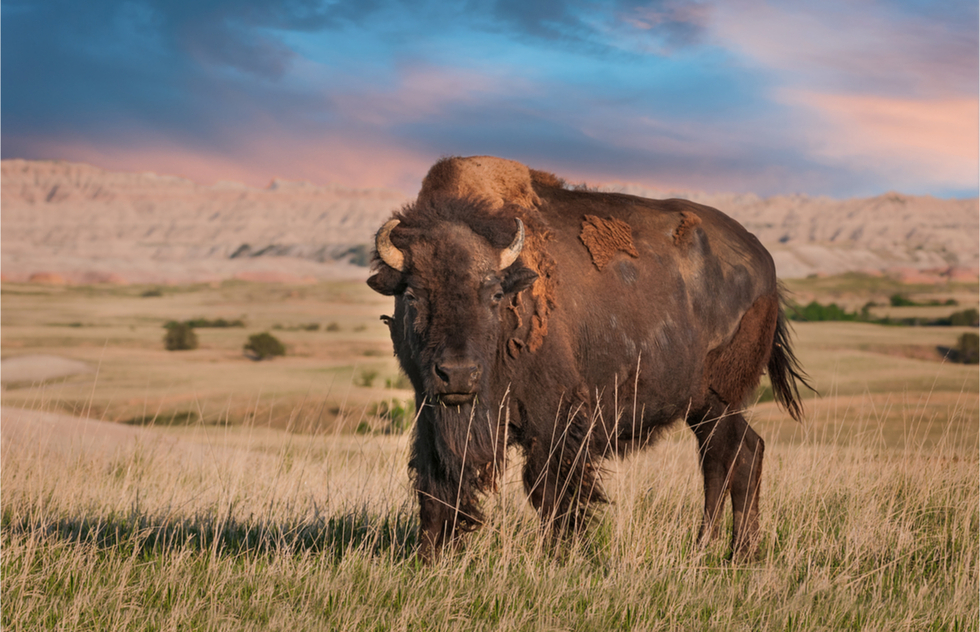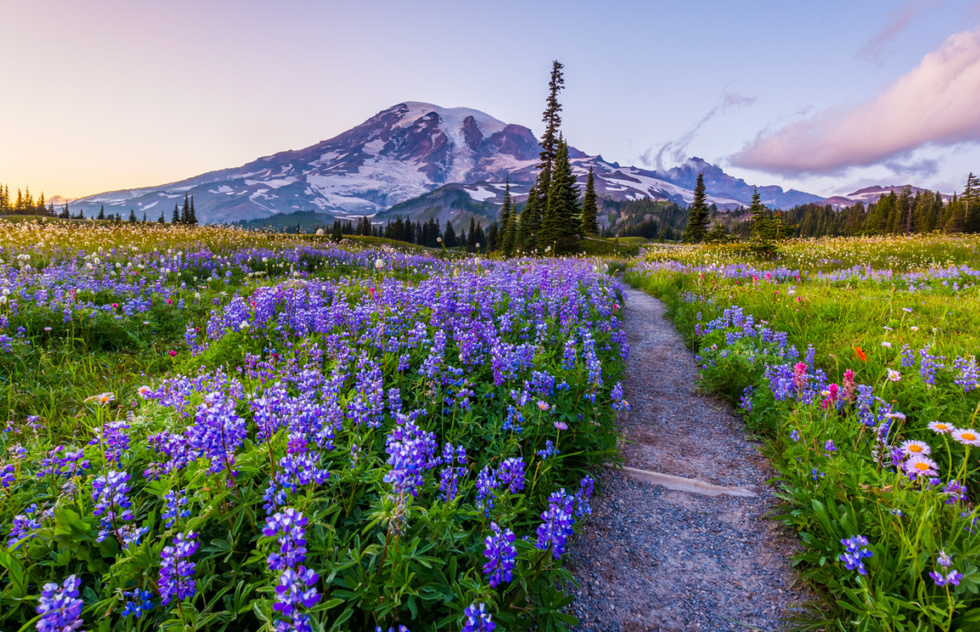A growing number of sites operated by the U.S. National Park Service no longer accept cash for entrance fees or other services.
In 2023, Badlands National Park in South Dakota, Crater Lake National Park in Oregon, and Sleeping Bear Dunes National Lakeshore in Michigan, among others, transitioned to fee systems that only allow credit card, debit card, and mobile payments. Washington State’s Mount Rainier National Park and Hawaii Volcanoes National Park followed suit in May, succeeded by Colorado’s Rocky Mountain National Park and California’s Death Valley National Park in June.
Those places join a roster of about two dozen U.S. federal lands that won’t take your U.S. federal currency, including Wyoming’s Devils Tower National Monument, FDR’s former home in Upstate New York, the Wright Brothers National Memorial in North Carolina, and the Chaco Culture pueblos in New Mexico.
From sea to shining sea, you’d better have a credit card, prepaid pass, or smartphone equipped with a mobile payment app if you want access to those important sites of natural beauty, historical interest, outdoor recreation, and family-road-trip fodder.
The National Park Service describes going cashless as a way of improving efficiency, saving money, and tightening security. Opponents counter that an ongoing “war on cash” in various kinds of transactions imperils privacy, limits access, and puts us all at the mercy of unholy technical glitches.
(Crater Lake National Park in Oregon | Credit: Chris Wiktor / Shutterstock)
Why are many national park sites going cashless in the first place?
In an email, National Park Service communications rep Ellie Stuckrath told Frommer’s that an effort is underway to “reduce the amount of cash and check deposits across the federal government in order to reduce organizational risk.”
At national park sites, according to Stuckrath, “Cashless options reduce transaction times at busy entrance stations, decrease the risk of theft, reduce chances of errors, and maximize the funding available for critical projects and visitor services.”
Despite these benefits from the government’s point of view, however, the decision to move toward fully cashless fee collection “rests with [each] site’s leadership, and we cannot predict which, or if any, sites will go cashless in the future.”
Officials at the parks that went cashless in 2023 echo the central office’s talking points.
Colleen Rawlings of Crater Lake National Park, which began accepting only plastic and mobile payment apps for entrance fees in January 2023, said, “Cashless transactions are actually processed faster than cash transactions,” so the former “reduce the time spent waiting in line at the entrance station and afford the visitor more time to enjoy the park.”
What’s more, not having cash at entrance stations removes them as targets for theft and reduces “the need for additional staff and time to process cash for deposits,” Rawlings said. She also dusted off the old pandemic chestnut about low-touch payment options “minimizing the risk to personal health for both visitors and employees.”
Badlands National Park chief ranger Kris Salapek, whose site went fully cashless in March 2023, also promoted the purportedly time- and money-saving factors and touted the opportunity to “reinvest resources” in park maintenance and visitor experiences rather than having to shell out for expenses such as armored vehicles to schlep deposits to the bank.
He did not point out that “cashless in the Badlands” has the makings of an excellent Bruce Springsteen lyric.
 (Bison at Badlands National Park in South Dakota | Credit: Geoffrey Kuchera / Shutterstock)
(Bison at Badlands National Park in South Dakota | Credit: Geoffrey Kuchera / Shutterstock)
So what’s the problem?
For starters, there’s the matter of erecting a barrier to accessing public lands for members of the public who don’t have bank accounts.
“The federal government should be, as a policy matter, on the side of preserving cash as an option,” Jay Stanley, a senior policy analyst with the American Civil Liberties Union, said in an interview. “It should be on the side of fighting exclusion and increasing accessibility, especially for low-income and other marginalized communities, who are the least likely to have bank accounts, who are the least likely to participate in the complex and bureaucratic systems that are involved in setting up cashless accounts.”
In case you think that encompasses a small number of Americans, consider this: In 2021, government data found that 4.5% of U.S. households are “unbanked” (without a bank account), while an estimated 14% were “underbanked” (relying on money orders, check cashing, and payday loans). Altogether, that’s about 25 million people.
And a higher proportion of those households are Black and Latino families compared to white ones. “In 2021, 2.1 percent of White households were unbanked, compared with 11.3 percent of Black households and 9.3 percent of Hispanic households,” according to the FDIC.
That’s one reason why the ACLU and other social justice groups such as the NAACP have voiced opposition to cashless retail transactions and why, as Stanley wrote in an ACLU commentary in 2019, fully cashless stores have been banned in several cities and states, including San Francisco, Philadelphia, New Jersey, and Massachusetts.
The park service’s move toward cashlessnes comes at a time when people of color in the United States are three times more likely than white people to live in nature-deprived places, according to the Center for American Progress, and 70% of low-income communities have limited access to forests, streams, mountains, and other natural areas.
In March 2024, the issue moved to the courts, when, as Outside magazine explains, “three would-be national park visitors filed a lawsuit against the Park Service after being turned away from parks in Arizona, New York, and Georgia … when they tried to pay the entrance fee in cash.”
Addressing the issue of unbanked and underbanked would-be park visitors, Stuckrath, the National Park Service spokesperson, said, “Parks and sites that make the transition to cashless operations are encouraged to provide alternative options for visitors who are only able to pay with cash or check.”
What might those alternatives be? “Purchasing a prepaid pass or providing a cash exchange machine outside of the park entrance,” said Stuckrath. Additionally, visitors can look into whether they qualify for one of the park service’s free passes, such as the ones for military members and people with disabilities.
Salapek, the Badlands ranger, recommended that those who can only use cash go to a store somewhere and buy a prepaid debit or gift card to use for the entrance fee.
The credit card companies that make those will be delighted with that suggestion, since they get a cut of every purchase. But it sounds like cash-reliant parkgoers are on their own when it comes to finding a retailer that sells the prepaid cards. (For what it’s worth, the famous Wall Drug Store sits just north of Badlands National Park; maybe try searching that sprawling roadside emporium first.)
Rawlings of Crater Lake told us in 2023 that site is “working on third-party agreements with local businesses outside the park where visitors can go to purchase a park entrance pass and pay cash there if they wish.” But she didn’t supply a time line for when that alternative will be available.
Rawlings also mentioned advance purchasing options from government-sponsored online booking, travel, and payment platforms like Recreation.gov, USGS.gov, and Pay.gov—but you’re going to need to be at least “underbanked” to use those.
And, anyway, why should some visitors have to jump through extra hoops?
Not to mention that, as the ACLU’s Stanley points out, digital payment systems can always go down in the event of, say, a power outage or computer malfunction.
“Payment systems tend to be centralized and somewhat brittle,” Stanley said. “You can always give somebody a $20 bill no matter what’s happening with the electricity or internet.”
 (Mount Rainier National Park in Washington State | Credit: Roman Khomlyak / Shutterstock)
(Mount Rainier National Park in Washington State | Credit: Roman Khomlyak / Shutterstock)
Which national parks have gone cashless?
The National Park Service told us the agency “does not currently track which parks and sites are completely cashless and which are not.”
So we combed through news releases and park websites to come up with the below list of National Park Service–operated sites that have announced a transition to fully cashless payment systems for entrance fees.
- • Badlands National Park, South Dakota
- • Bent’s Old Fort National Historic Site, Colorado
- • Crater Lake National Park, Oregon
- • Chaco Culture National Historical Park, New Mexico
- • Cumberland Island National Seashore, Georgia
- • Death Valley National Park, California
- • Devils Tower National Monument, Wyoming
- • Fort McHenry National Monument and Historic Shrine, Maryland
- • Harpers Ferry National Historical Park, West Virginia
- • Hawaii Volcanoes National Park, Hawaii
- • Home of Franklin D. Roosevelt National Historic Site, New York
- • Hovenweep National Monument, Colorado and Utah (effective March 31, 2024)
- • Isle Royale National Park, Michigan
- • Lake Mead National Recreation Area, Arizona and Nevada
- • Little Bighorn Battlefield National Monument, Montana
- • Mount Rainier National Park, Washington
- • Natural Bridges National Monument, Utah (effective March 31, 2024)
- • Pipe Spring National Monument, Arizona
- • Prince William Forest Park, Virginia
- • Rocky Mountain National Park, Colorado
- • Sleeping Bear Dunes National Lakeshore, Michigan
- • Thomas Edison National Historical Park, New Jersey
- • Vicksburg National Military Park, Mississippi
- • Wind Cave National Park, South Dakota
- • Wright Brothers National Memorial, North Carolina
Note that some sites that don’t charge entrance fees, such as Amistad National Recreation Area in Texas, Cape Lookout National Seashore in North Carolina, and Marsh-Billings-Rockefeller National Historical Park in Vermont, do require cashless payment for other services such as tours, camping, permits, and cabin stays.
You can find a full list of National Park Service entrance fees at NPS.gov. Go to the website of the park you’re interested in to find information on other fees—and which ones must be paid in advance, usually via Recreation.gov, or with plastic and digital payments only.
 (Sleeping Bear Dunes National Lakeshore in Michigan | Credit: Paper and Lens Co / Shutterstock)
(Sleeping Bear Dunes National Lakeshore in Michigan | Credit: Paper and Lens Co / Shutterstock)
What about park concessions and other fees?
“Concession operations are required to accept cash if specified by state or local law,” according to Struckrath of the National Park Service.
And even when local laws don’t mandate a cash option, the National Park Service recommends that concessions operators, such as retail stores and food-and-beverage vendors, follow the “standard industry practice” of providing at least one “point-of-sale [option] where cash is accepted,” Stuckrath added.
That goes for third-party vendors who operate retail stores, food venues, parking lots, tours, and campgrounds at national park sites—but the guidance about providing at least one option where cash is accepted evidently doesn’t apply to the park’s own entrance stations.
For now, most of the parks listed above still have concessions that allow cash purchases for stuff like snacks and souvenirs. But you might find that camping and paid tours have either gone cashless or require advance purchase and booking via Recreation.gov (which can amount to a de facto cashless arrangement).
It’s always wise to consult the fees page of the park website well before your visit for full details.
Because at more and more national parks, you’ll discover that the USA’s wide-open spaces are no longer open to visitors with cash alone.
You May Also Like:
• European Vacations Went Cashless Fast. Are You Prepared?
• Airlines Still Cashless Even Though Many Passengers Don’t Own Credit Cards